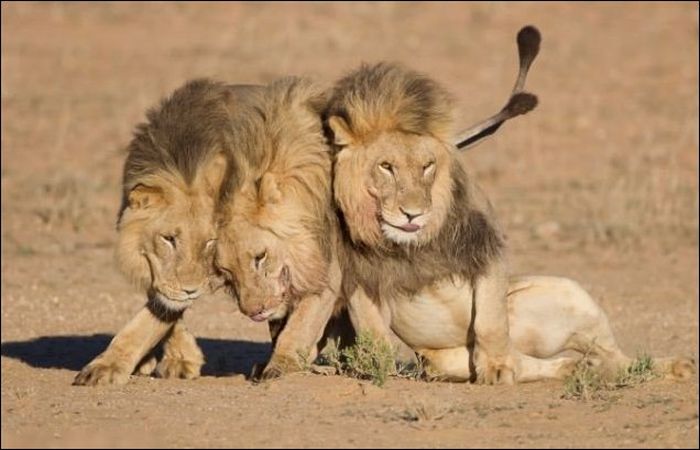|
|
Three Lazy Lions
|
Lions were kept and bred by Assyrian kings as early as 850 BC, and Alexander the Great was said to have been presented with tame lions by the Malhi of northern India. Later in Roman times, lions were kept by emperors to take part in the gladiator arenas. Roman notables, including Sulla, Pompey, and Julius Caesar, often ordered the mass slaughter of hundreds of lions at a time. In the East, lions were tamed by Indian princes, and Marco Polo reported that Kublai Khan kept lions inside. The first European "zoos" spread amongst noble and royal families in the thirteenth century, and until the seventeenth century were called seraglios; at that time, they came to be called menageries, an extension of the cabinet of curiosities. They spread from France and Italy during the Renaissance to the rest of Europe. In England, although the seraglio tradition was less developed, Lions were kept at the Tower of London in a seraglio established by King John in the thirteenth century, probably stocked with animals from an earlier menagerie started in 1125 by Henry I at his palace in Woodstock, near Oxford; where lions had been reported stocked by William of Malmesbury.
Seraglios served as expressions of the nobility's power and wealth. Animals such as big cats and elephants, in particular, symbolized power, and would be pitted in fights against each other or domesticated animals. By extension, menageries and seraglios served as demonstrations of the dominance of humanity over nature. Consequently, the defeat of such natural "lords" by a cow in 1682 astonished the spectators, and the flight of an elephant before a rhinoceros drew jeers. Such fights would slowly fade out in the seventeenth century with the spread of the menagerie and their appropriation by the commoners. The tradition of keeping big cats as pets would last into the nineteenth century, at which time it was seen as highly eccentric.
The presence of lions at the Tower of London was intermittent, being restocked when a monarch or his consort, such as Margaret of Anjou the wife of Henry VI, either sought or were given animals. Records indicate they were kept in poor conditions there in the seventeenth century, in contrast to more open conditions in Florence at the time. The menagerie was open to the public by the eighteenth century; admission was a sum of three half-pence or the supply of a cat or dog for feeding to the lions. A rival menagerie at the Exeter Exchange also exhibited lions until the early nineteenth century. The Tower menagerie was closed down by William IV, and animals transferred to the London Zoo which opened its gates to the public on 27 April 1828.
The wild animals trade flourished alongside improved colonial trade of the nineteenth century. Lions were considered fairly common and inexpensive. Although they would barter higher than tigers, they were less costly than larger, or more difficult to transport animals such as the giraffe and hippopotamus, and much less than pandas. Like other animals, lions were seen as little more than a natural, boundless commodity that was mercilessly exploited with terrible losses in capture and transportation. The widely reproduced imagery of the heroic hunter chasing lions would dominate a large part of the century. Explorers and hunters exploited a popular Manichean division of animals into "good" and "evil" to add thrilling value to their adventures, casting themselves as heroic figures. This resulted in big cats, always suspected of being man-eaters, representing "both the fear of nature and the satisfaction of having overcome it."
|
|









